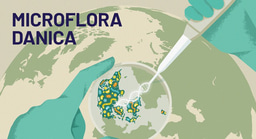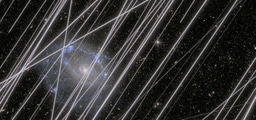Discovering Europe's Last Hunter-Gatherers
Published in Ecology & Evolution and Arts & Humanities
What happens to a pristine environment when humans first arrive in it? The adaptation to multiple diverse habitats – or niche expansion – is at the heart of our species, and investigating ancient human impacts on earth’s ecosystems has emerged as a major research question. Given the challenges relating to the size and complexities of mainland ecosystems, I hoped to be able to tackle this question by looking at the tiny Mediterranean island of Malta. First of all, small and remote islands are thought to have been colonized last. Secondly, Malta had been the scene of an extraordinary natural experiment, which had resulted in an iconic, miniaturized megafauna. Pygmy hippos, dwarf elephants, and tiny deer either rubbed shoulders with each other, or successively appeared as the titans of their tiny ecosystems. Conversely, on this isolated archipelago, the small became large, and giant swans and dormice also roamed the landscape. What happened to these animals, and what was the impact of their loss? Were they really long gone by the arrival of the first people on Malta? If this was the case, what kind of pristine ecosystem did these first farmers encounter, and how did they alter it?
Spurred on by these questions, I found myself in Malta in December 2017, conducting a reconnaissance at a doline in the north of Malta . As soon I saw Latnija, everything just felt right. It was a huge hole in the ground, full of fragrant almond and fig trees, with striking views over a rocky coastline and the sparkling Mediterranean Sea beyond. Fresh water seeped through the cracks within the cave, as well as from natural springs around it. Within the doline itself, uneven ground rose towards the northern edge under a natural rock shelter in the lee of the prevailing northwesterly wind. It was dry, pleasant, and almost invisible in the surrounding, thyme and lentisk-peppered landscape. This was the spot to investigate when the first people arrive on Malta, and what they might have found here.
As far as we all knew, these earliest arrivals on Malta were farmers, who were the first to leverage their technology and agricultural practices to survive on small and remote islands. There was no evidence for any hunter-gatherers that stood up to any real scrutiny on islands like Malta. The traces of the ancient hunter-gatherers who populated Europe before the arrival of farmers were only found on islands that were large, and close to the mainland. These islands, like Sicily, were easy to reach and large enough for the foragers who required a much greater land area to gather food and hunt wild animals. Malta was another story however. As the crow flies, it is situated 85 km away from Sicily, and consists of a small land area of around 315 km2. As a result, it was no surprise that the first traces of people on Malta dated to the Neolithic, some 7400 years ago, even if the early stages of that process remained somewhat shrouded in mystery. The land was simply too small and remote for hunter-gatherers to be able to exploit, it was thought.
For these reasons as we laid out the first test trenches in 2019, I was hoping to clarify something about the ecosystems found by the first farmers, and how they had been altered. As we dug the fourth test trench - aptly named Trench 4 - we moved down the expected sequence. Early modern material scattered on the surface and sub-surface, gave way to Roman, Phoenician and the Bronze Age artefacts before moving down to classic Late Neolithic Temple Period pottery, and finally the ceramics associated with the earliest Neolithic. Then something strange happened. The pottery and bones of domesticated animals dropped off, but the indications of human activity remained. The bones of wild animals replaced the domesticates in the form of species like the dwarf deer supposedly long extinct by the first arrival of humans. Only here, they were burned and blackened by fire, and surrounded with scattered stone tools, made out of local limestone. The depth of the remains suggested an antiquity never before documented in Malta. When the results of the radiocarbon ages began to come in, they challenged everything that the textbooks told us.
At that point, we ground everything to halt in the knowledge that we needed some serious resources to ensure the highest levels of investigation. We were clearly no longer in a test trench phase. After a year off applying for funds and formulating a strategy, we decided to put all the 2019 material aside and determine whether we could obtain the same results using the most detailed and cutting-edge techniques available. In other words, we wanted to conclusively test whether our initial results were correct, or if we had been tricked by some kind of geological complexity.
From the next field season in 2021, we carefully began extending Trench 4 to a 5 x 5 metre trench, excavating millimetres of sediment in painstaking detail. Every find and feature was recorded in three dimensions, and all the excavated sediment was collected for analysis, from ancient DNA to microscopic plant remains. We used photogrammetry to record the geometry of the site with the removal of each sedimentary context, to enable us to digitally reconstruct all the excavation. We drew plan after plan on permatrace, made copious notes on context sheets, created databases tracking samples and results. An army of postdoctoral scientists and collaborators assembled to assist on everything from geochronology to computational modelling, genetics to archaeobotany and pyroarchaeology. Although the excavations and conditions presented severe trials, the excitement during the field season became palpable, and we bonded like veterans. Gradually, we validated our initial observations.
By the end of the third season, we had a suite of radiocarbon dates, analyses of animal and plant remains, clear hearths, and stone tools that indisputably pointed towards a Mesolithic hunter-gatherer presence on Malta at least from 8500 years ago. The abundant remains of birds, fish, marine mammals, crabs, and gastropods showed how these hunter-gatherers were able to sustain themselves on a small arid island that had almost reached its current size and configuration. The results overturned all our notions about the capabilities of Europe's last hunter-gatherers. Not only were they able to overcome Malta’s small land size without depleting its terrestrial resources, they were also able to cross a significant body of open water to do so. In essence, these late European hunter-gatherers could not have simply embarked on a straight-line distance journey between the two closest points on Malta and Sicily. Instead, once we began accounting for wind directions, currents, and navigation, it became obvious that we were looking at a minimum distance of 100 km in open water. Calculations based on modern analogues and experimental archaeology indicated that even on the longest day of the year, such a crossing entailed several hours of darkness at sea. This was one of the longest yet known pre-Neolithic journeys in the world, and the longest known in the Mediterranean.
Many questions remain. Who were these people? Why did they undertake such a long, dangerous and arduous journey? Did they live in Malta, or exploit it seasonally? How did they impact the fragile insular ecosystem they encountered? We are attempting to answer these questions. For example, our preliminary analyses of the animal remains already indicated that they hunted endemic species who have since long gone extinct, but it seems some of these were still around when the first farmers arrived. These included deer as well as extremely large birds that no longer exist today. We have also obtained ancient DNA which may be able to reveal the ancestry of these people, and their relationships with other hunter-gatherers in the Mesolithic world. After all, if they could reach Malta, where else could they have gone? Ultimately, these discoveries force a re-evaluation of long discarded arguments to the table, from connections across the Mesolithic Mediterranean to the causes of endemic species collapse on other islands. In essence, we have only just scratched at the surface of what promises to be a fascinating, unfolding story.
Follow the Topic
-
Nature

A weekly international journal publishing the finest peer-reviewed research in all fields of science and technology on the basis of its originality, importance, interdisciplinary interest, timeliness, accessibility, elegance and surprising conclusions.






Please sign in or register for FREE
If you are a registered user on Research Communities by Springer Nature, please sign in